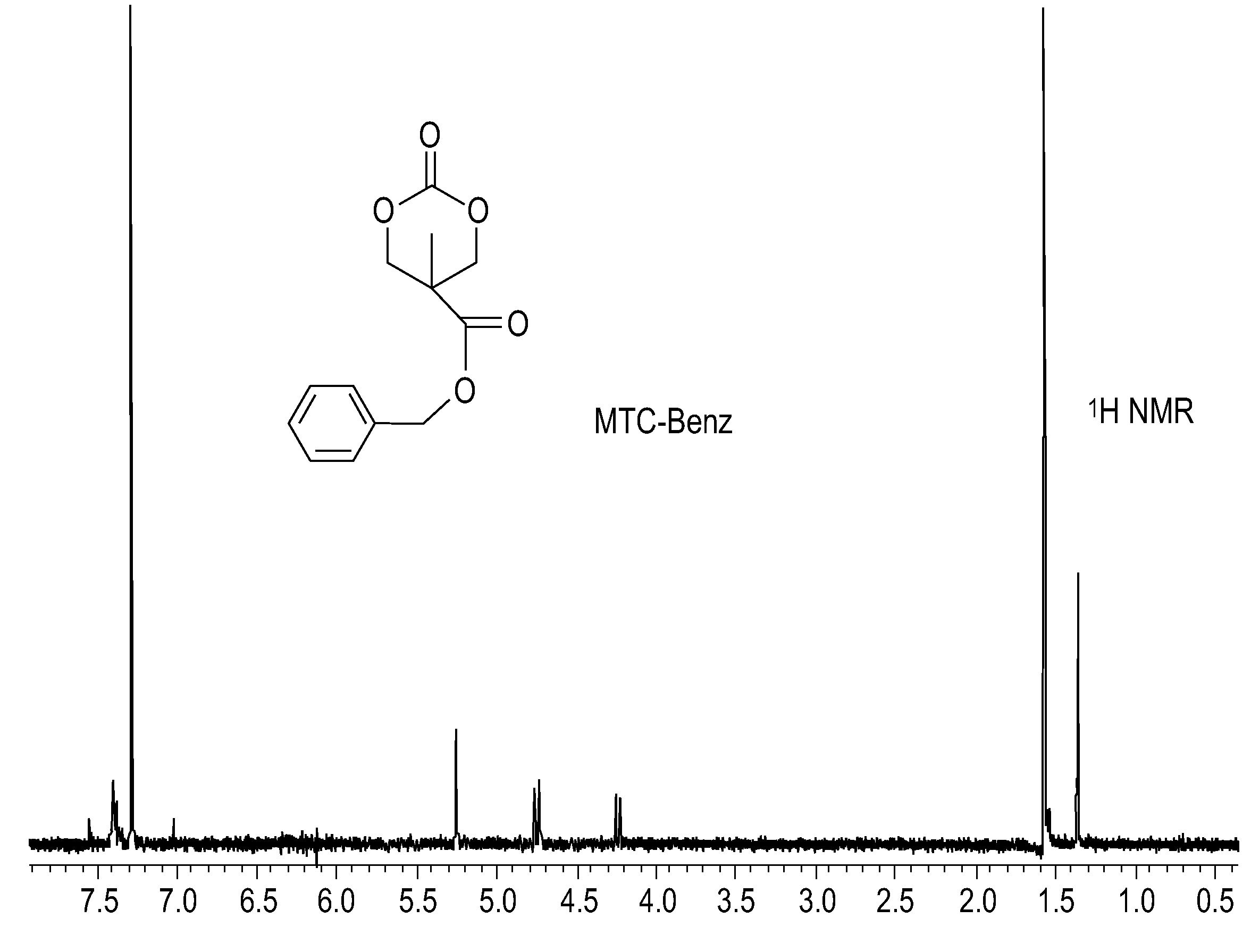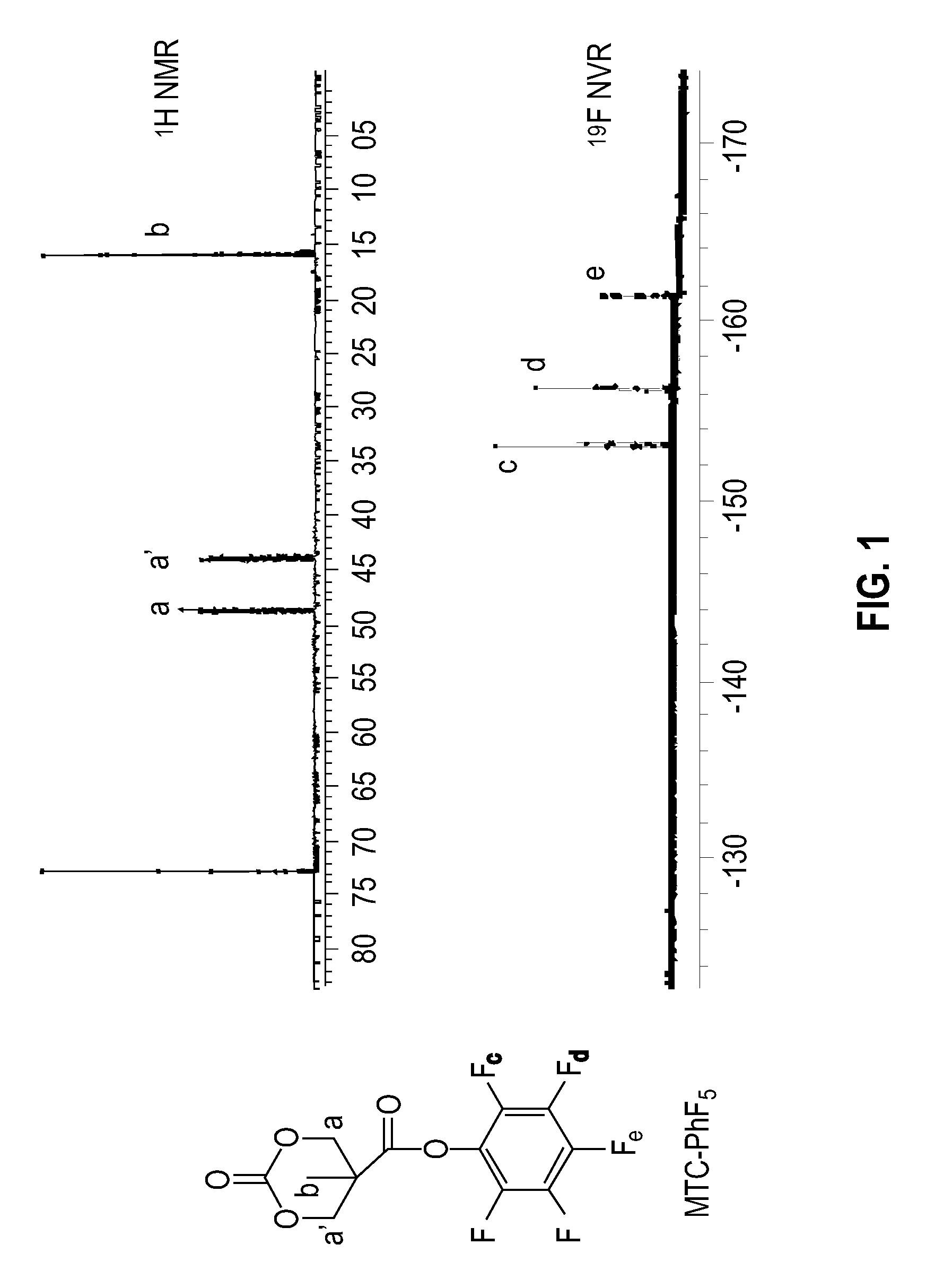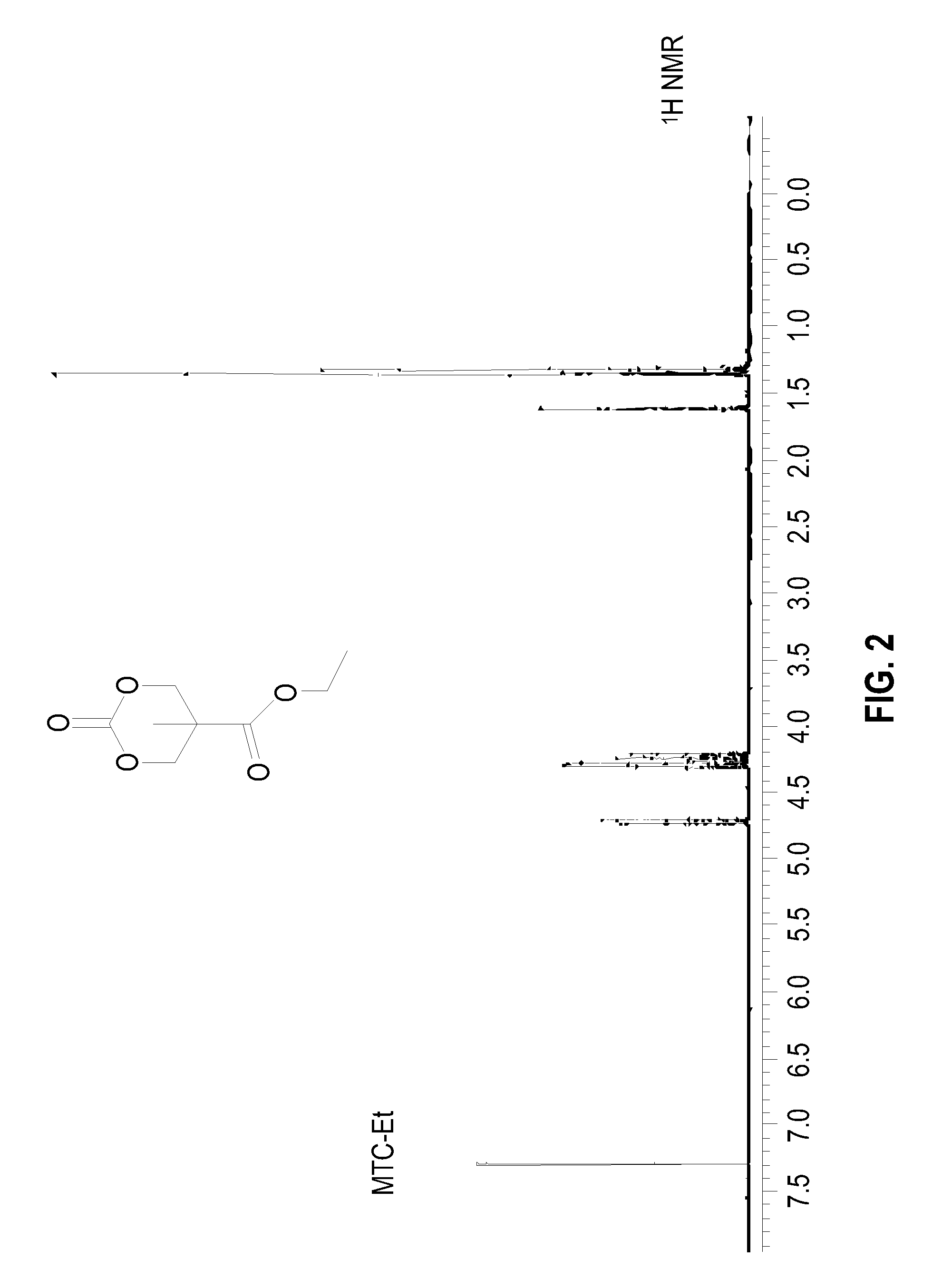Polymers bearing pendant pentafluorophenyl ester groups, and methods of synthesis and functionalization thereof
a technology of pentafluorophenyl ester and pentafluorophenyl ester, which is applied in the field of polymers bearing pendant pentafluorophenyl ester groups, and methods of synthesis and functionalization thereof, can solve the problems of limited number of monomers, ring-opening of corresponding cyclic carbonate thermodynamically unfavorable, and hampered initial efforts to employ substituted lactones as rop monomers
- Summary
- Abstract
- Description
- Claims
- Application Information
AI Technical Summary
Benefits of technology
Problems solved by technology
Method used
Image
Examples
example 1
Preparation of 5-methyl-5-pentafluorophenyloxycarboxyl-1,3-dioxane-2-one, MTC-PhF5, (7)
[0096]
[0097]A 100 mL round bottom flask was charged with bis-MPA, (7), (5.00 g, 37 mmol), bis-(pentafluorophenol)carbonate (PFC, 31.00 g, 78 mmol), and CsF (2.5 g, 16.4 mmol rinsed in with 70 / / mis of tetrahydrofuran (THF). Initially the reaction was heterogeneous, but after one hour a clear homogeneous solution was formed that was allowed to stir for 20 hours. The solvent was removed in vacuo and the residue was re-dissolved in methylene chloride. The solution was allowed to stand for approximately 10 minutes, at which time the pentafluorophenol byproduct precipitated and could be quantitatively recovered. This pentafluorophenol byproduct showed the characteristic 3 peaks in the 19F NMR of pentafluorophenol and a single peak in the GCMS with a mass of 184. The filtrate was extracted with sodium bicarbonate, water and was dried with MgSO4. The solvent was evaporated in vacuo and the product was re...
example 2
Preparation of MTC-Et, (9)
[0098]
[0099]A round bottom flask was charged with a THF solution of MTC-PhF5, ethanol and CsF. The reaction was allowed to stir overnight, after which NMR analysis on the crude product showed about 95% conversion to the ethyl ester carbonate. The solvent was removed and the mixture was re-dissolved in methylene chloride. The solution was allowed to stand for approximately 10 min, at which time the pentafluorophenol byproduct precipitated and could be quantitatively recovered. This byproduct showed the characteristic 3 peaks in the 19F NMR of pentafluorophenol and a single peak in the GCMS with a mass of 184 g / mol. The organic phase was treated with saturated NaHCO3 (200 mL), brine (200 mL), and water (200 mL), and dried over MgSO4. The solvent was evaporated in vacuo, and the residue was recrystallized from ethyl acetate to give white crystals (56% yield). GCMS showed a single peak with mass of 189 g / mol, calculated molecular weight for C8H12O5 (188 g / mol) ...
example 3
Preparation of MTC-BnAmine, (10)
[0100]
[0101]To a THF solution of bis-MPA carbonate (0.25 g, 0.76 mmol), benzyl amine (0.08 g, 0.76 mmol) dissolved in THF was added dropwise at 0° C. 1H NMR after 5 minutes reaction time showed 60% conversion at 0° C. The reaction was allowed to proceed overnight and slowly warm to room temperature. The 1H NMR of the reaction mixture showed quantitative conversion of the ester to the amide with no residual benzyl amine and no side reactions. The reaction mixture was concentrated and dissolved in methylene chloride, a non-solvent for the pentafluorophenol, which was filtered. The product was concentrated and crystallized from ethyl acetate / hexane mixtures. Yield: 70%. GCMS showed a single peak with mass of 249 g / mol, calculated molecular weight for C13H15NO5 (249 g / mol) consistent with the assigned structure (FIG. 3). 1H-NMR (400 MHz in CDCl3): δ 7.30-7.45 (m, 5H, ArH), 4.70 (d, J=10.8 Hz, 2H, CHaHb(, 4.50 (d, 2H, ArCH2N), 1.35 (s, 3H, CCH3).
PUM
| Property | Measurement | Unit |
|---|---|---|
| Fraction | aaaaa | aaaaa |
| Fraction | aaaaa | aaaaa |
| Fraction | aaaaa | aaaaa |
Abstract
Description
Claims
Application Information
 Login to View More
Login to View More - R&D
- Intellectual Property
- Life Sciences
- Materials
- Tech Scout
- Unparalleled Data Quality
- Higher Quality Content
- 60% Fewer Hallucinations
Browse by: Latest US Patents, China's latest patents, Technical Efficacy Thesaurus, Application Domain, Technology Topic, Popular Technical Reports.
© 2025 PatSnap. All rights reserved.Legal|Privacy policy|Modern Slavery Act Transparency Statement|Sitemap|About US| Contact US: help@patsnap.com



